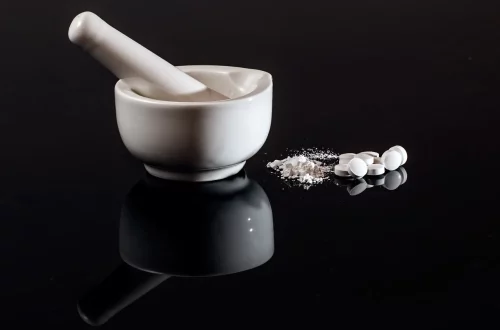
Healthy and Tasty Diabetic Cat Treats for Your Feline Friend
Caring for a diabetic cat can be a challenging yet rewarding experience. As a pet owner, understanding the dietary needs of your feline friend is crucial to managing their condition effectively. Cats with diabetes require a balanced diet that helps regulate their blood sugar levels while still providing the essential nutrients they need to thrive. Treats can play a significant role in your cat’s diet, serving as rewards during training or simply as a way to show love and affection. However, not all treats are created equal, especially for diabetic cats.
Finding the right balance between healthy and tasty can seem daunting. It’s essential to choose treats that are low in carbohydrates and sugars while still appealing to your cat’s taste buds. Many commercial cat treats are packed with fillers and artificial ingredients that can exacerbate a diabetic cat’s condition. Consequently, making homemade treats can be a fantastic alternative, allowing you to control the ingredients and ensure their safety. A thoughtful approach to your cat’s treat options can contribute significantly to their overall health and happiness. With the right information and a little creativity, you can provide your furry companion with delicious treats that align with their dietary needs.
Understanding Diabetic Cat Nutrition
When it comes to managing diabetes in cats, understanding their nutritional requirements is paramount. Diabetic cats need a diet that is high in protein and low in carbohydrates. This dietary approach helps to stabilize blood sugar levels, preventing spikes that can lead to serious health issues. Cats are obligate carnivores, meaning their bodies are designed to digest and utilize animal proteins effectively. Therefore, a diet rich in high-quality protein sources is vital.
Carbohydrates, on the other hand, can lead to fluctuations in blood glucose levels. Many commercial cat foods and treats contain excessive amounts of carbohydrates, often derived from grains and fillers. For diabetic cats, these types of carbohydrates can be detrimental. It’s essential to read labels carefully and choose products that prioritize meat-based ingredients.
Aside from proteins and carbohydrates, diabetic cats also require healthy fats to maintain energy levels. Fats are a concentrated energy source and are essential for overall health. Omega-3 and Omega-6 fatty acids are particularly beneficial, promoting healthy skin and coat, as well as reducing inflammation.
Hydration is another critical factor in a diabetic cat’s diet. Cats are often prone to dehydration, especially if they are on a dry food diet. Incorporating wet food or providing fresh water at all times can help ensure your cat stays hydrated. Keeping your cat’s dietary needs in check will not only help manage their diabetes but also enhance their quality of life.
Homemade Treat Ideas for Diabetic Cats
Creating homemade treats for your diabetic cat can be a fun and rewarding experience. You have the advantage of controlling the ingredients, ensuring they are both healthy and tasty. There are numerous recipes available that prioritize low-carb ingredients while still appealing to your cat’s palate.
One simple recipe involves using cooked chicken or turkey. Shredded cooked chicken mixed with a small amount of pumpkin puree can create a delightful treat that is low in carbohydrates. Pumpkin is a great source of fiber and can aid in digestion, making it an excellent ingredient for diabetic cats.
Another option is to make salmon bites. Combine canned salmon (in water, not oil) with a bit of egg and almond flour to form small patties. Bake them until they are firm and can be broken into bite-sized pieces. Salmon is rich in protein and omega-3 fatty acids, which are beneficial for overall health.
If you want to try something different, consider using gelatin. You can make a simple treat by mixing low-sodium chicken broth with gelatin and pouring it into molds. Once set, these gelatin treats can be a refreshing and hydrating snack for your cat.
Always remember to introduce any new treats gradually and monitor your cat’s response. It’s important to consult with your veterinarian before making significant changes to your cat’s diet, ensuring that the treats align with their specific health needs.
Commercial Treats: What to Look For
If you prefer to buy treats instead of making them, it’s crucial to know what to look for in commercial products. The market is filled with options, but not all are suitable for diabetic cats. Start by examining the ingredient list. The primary ingredient should always be a high-quality source of protein, such as chicken, turkey, or fish. Avoid treats that list grains or fillers, such as corn or wheat, as these can significantly increase carbohydrate content.
Next, check the nutritional information. Look for treats with low carbohydrate content—ideally, these should be below 10% on a dry matter basis. Some brands specifically formulate their treats for diabetic pets, which can be a great option.
Additionally, consider the calorie content. Treats should not exceed 10% of your cat’s daily caloric intake, especially for diabetic cats who need to maintain a healthy weight. Overindulgence can lead to obesity, which complicates diabetes management.
Finally, seek out products that are free from artificial preservatives, flavors, and colors. Natural ingredients are always preferable, as they are less likely to cause adverse reactions in your pet.
By being diligent about the treats you choose, you can provide your diabetic cat with enjoyable snacks that support their health and well-being.
The Importance of Moderation
While treats can be a delightful addition to your cat’s diet, moderation is key. Treats should be viewed as an occasional indulgence rather than a staple of their diet, especially for diabetic cats. Overfeeding treats can lead to an imbalance in their overall nutrition and contribute to weight gain, which can exacerbate diabetes.
Establishing a routine for treats can help manage your cat’s overall caloric intake. Consider designating specific times for treats, such as during training or as rewards for good behavior. This approach not only helps control portions but also reinforces positive interactions between you and your feline friend.
If you’re introducing a new treat, monitor how your cat reacts to it. Keep an eye out for any changes in behavior or health, such as increased thirst or lethargy, which could indicate that the treat isn’t suitable.
Consulting with your veterinarian about the best treat options for your diabetic cat is always a wise choice. They can provide specific recommendations based on your cat’s health status and dietary needs.
In conclusion, providing healthy and tasty treats for your diabetic cat is not only possible but can also be a fun part of your relationship. With the right knowledge and creativity, you can ensure your furry friend enjoys a variety of delicious snacks that support their health.
**Disclaimer:** This article is not intended as medical advice. If you have concerns about your cat’s health or dietary needs, please consult a veterinarian for professional guidance.




